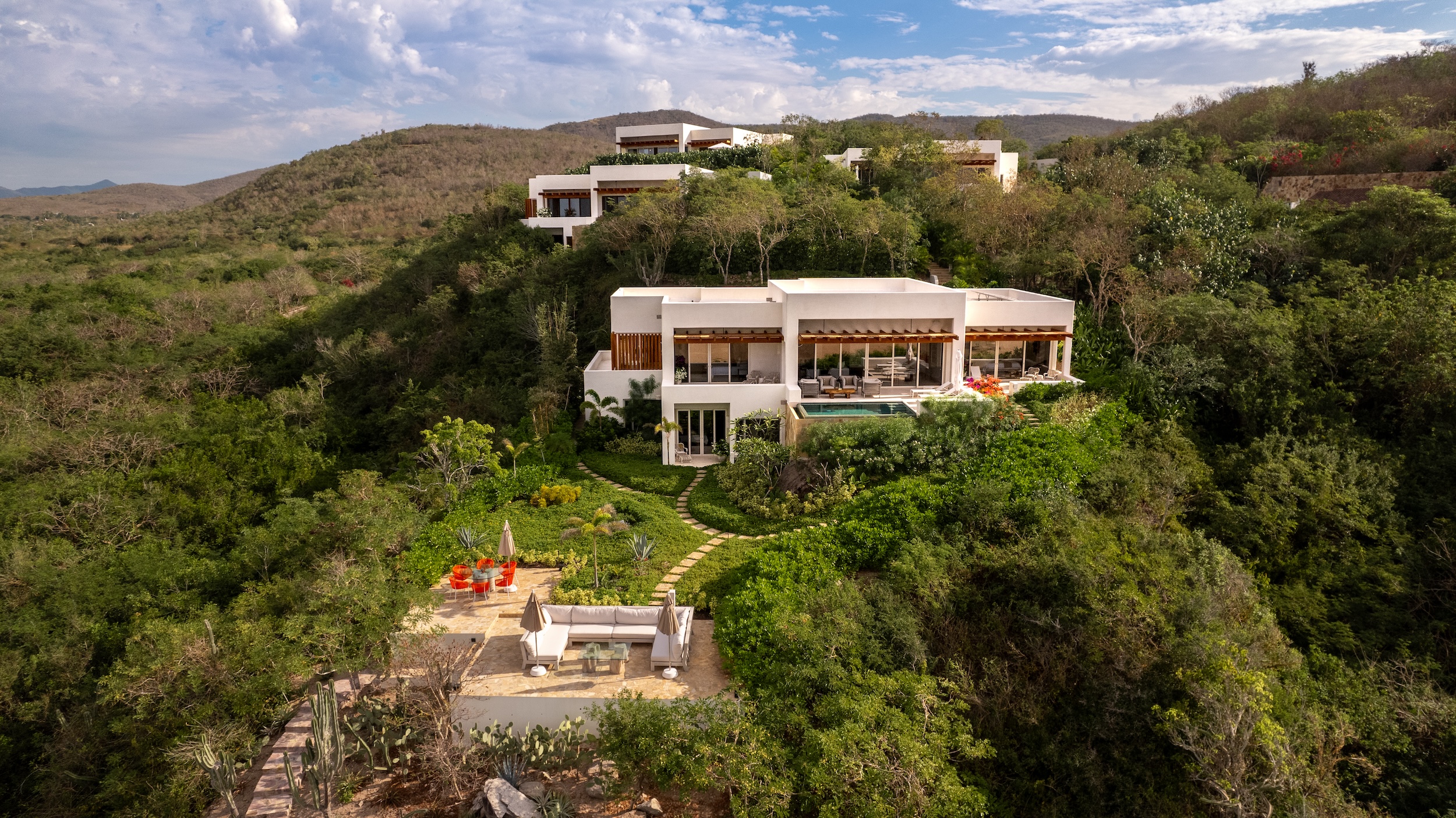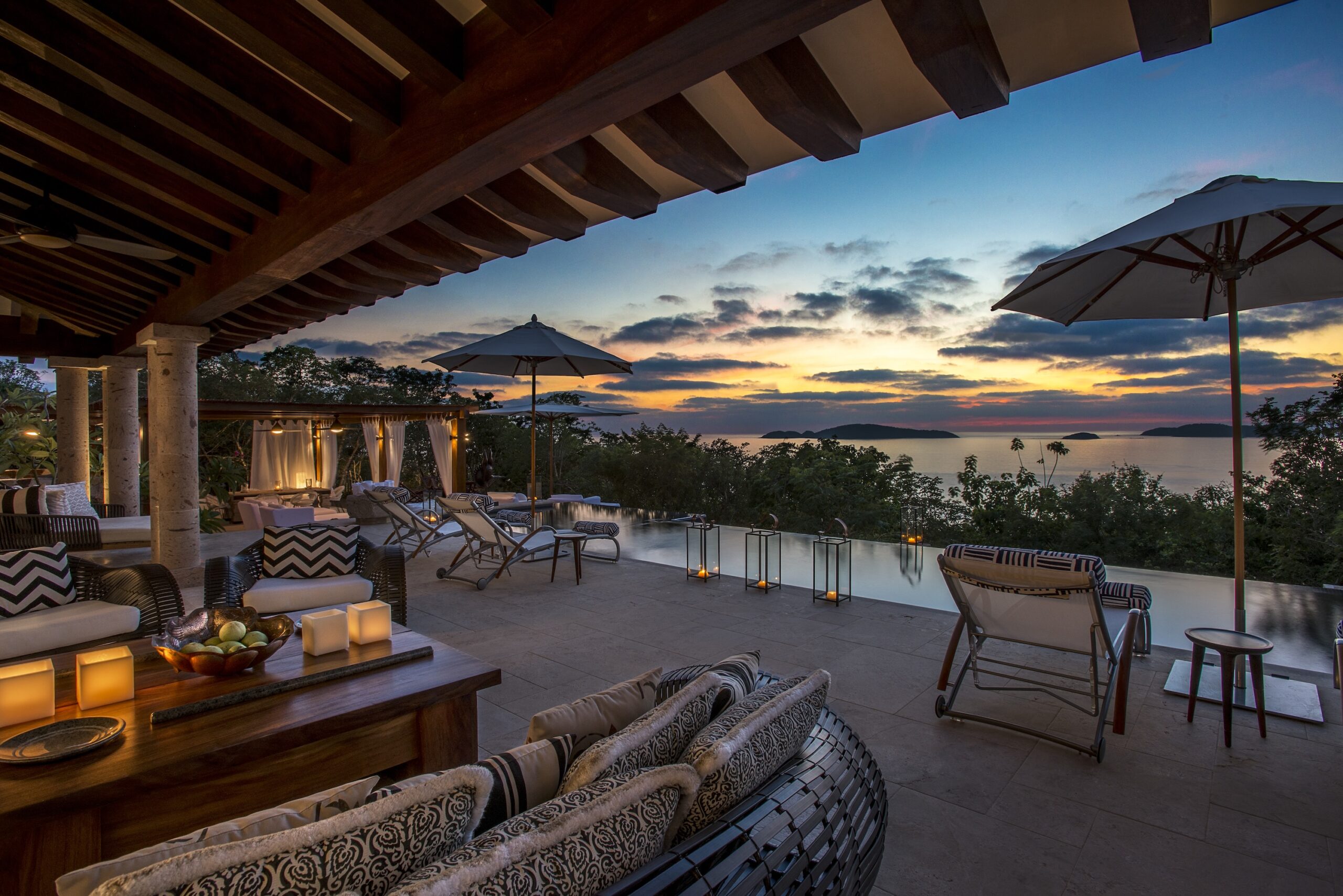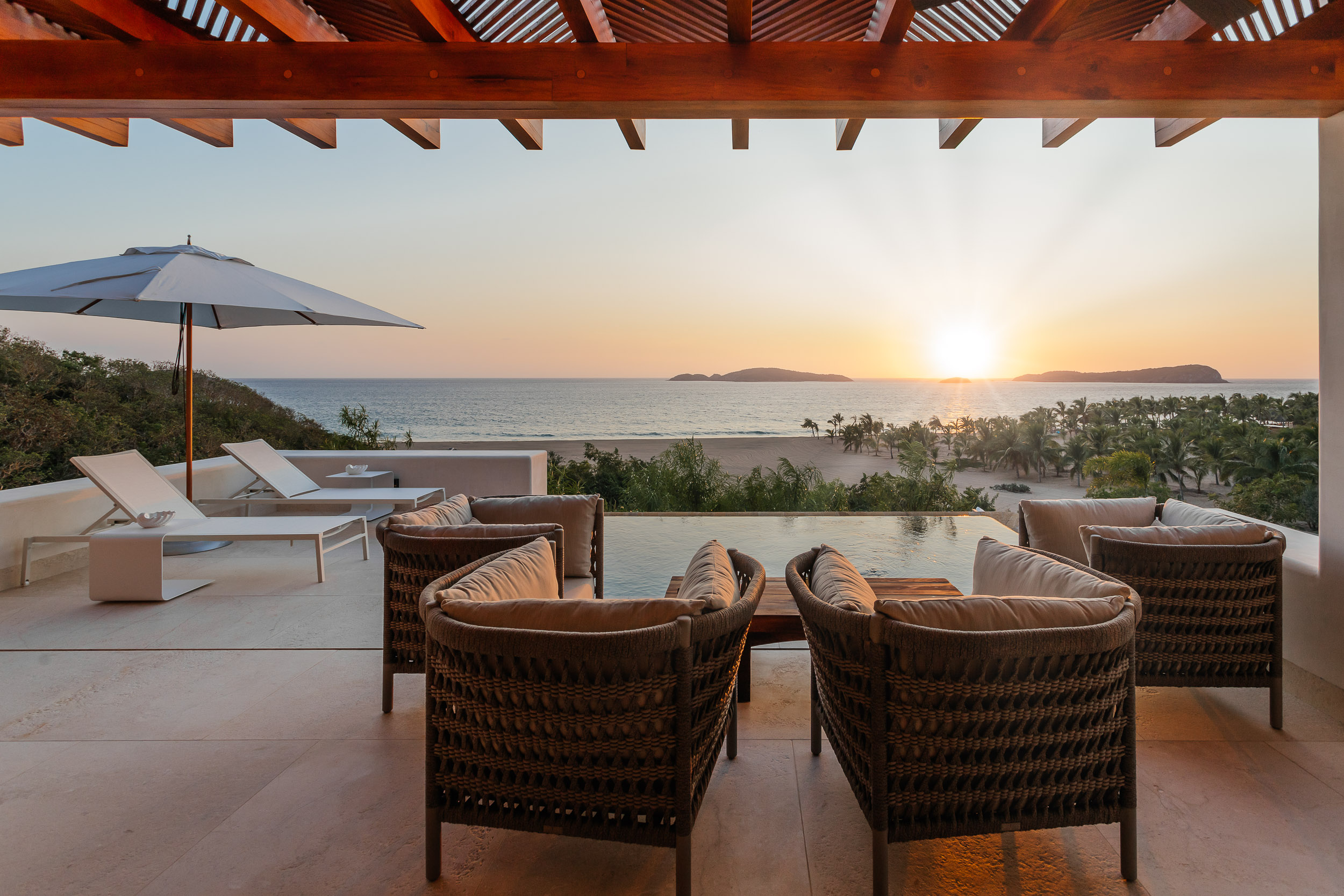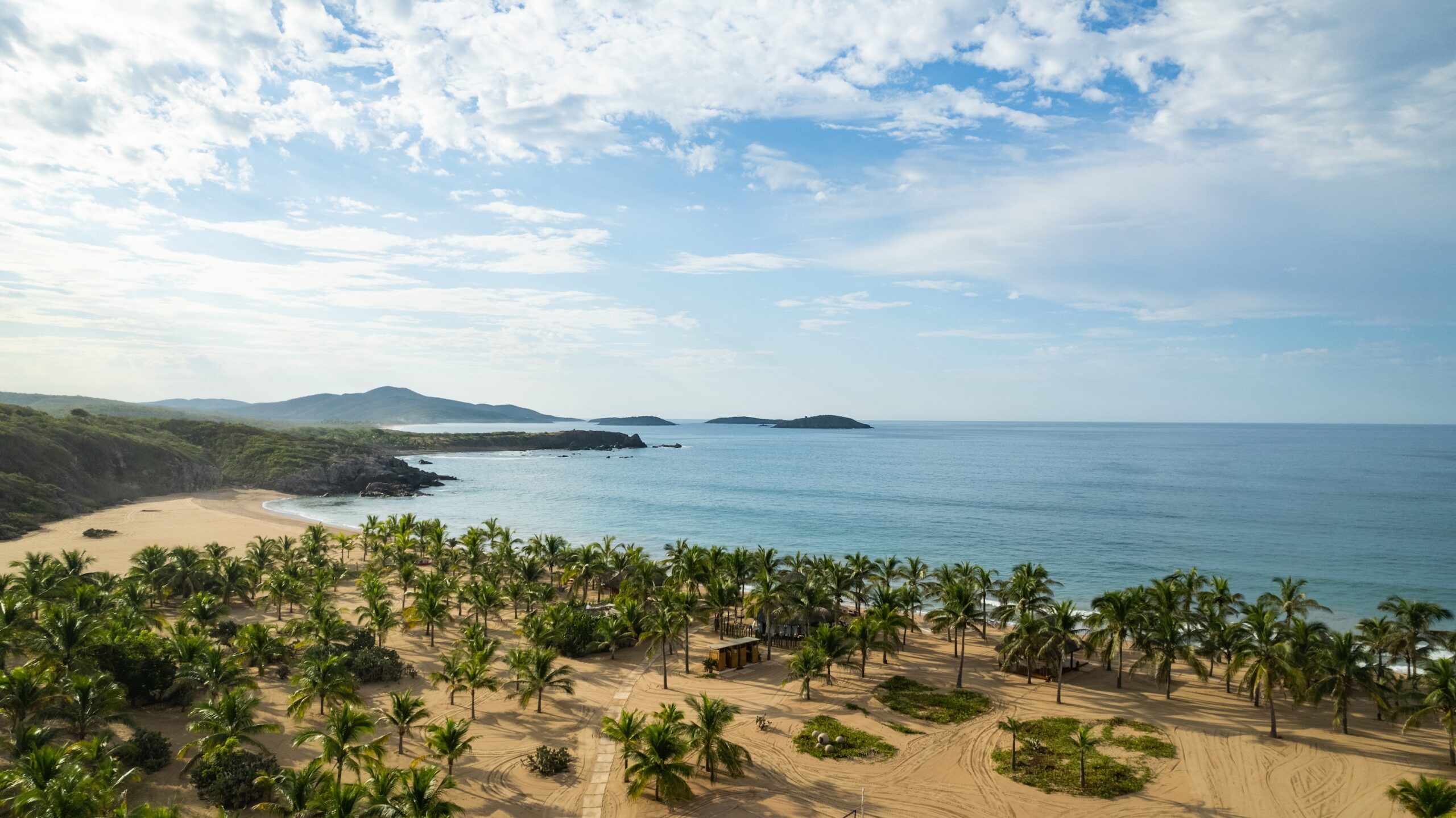NORTH STARS:
Community support
Heritage value
Wildlife & Ecosystems
“We’ve kept 70% of the property untouched as a wildlife reserve, protecting the area’s rich biodiversity. This sanctuary allows native species to thrive while offering visitors a rare chance to experience nature in its purest form.“
The lush jungles, acres of mango orchards, and sleepy coastline passing by feel much farther away than a couple of hours from Puerto Vallarta’s souvenir shops, busy streets, and lively nightlife. After canceled flights and missed connections, Costalegre, Mexico, beckons with its unspoiled beaches and protected wildlife. A small group of private landowners have kept the wild coastal region between Puerto Vallarta and Manzanillo natural and implemented only sustainable development initiatives conscious of the local communities and their daily lives since the 1960s.
Known as the “Happy Coast,” thousands of acres of the UNESCO Chamela-Cuixmala Biosphere Reserve are dotted with small barrios and private resort properties dedicated to environmental protection and conscious luxury. The Biosphere Reserve’s 36,000 acres protect 70 species of mammals, 270 species of birds, and over 1200 species of plants — it’s considered one of the most diverse on the Americas’ Pacific Coast and one of the most threatened ecosystems worldwide.
Pulling into Las Rosadas feels like entering the Secret Garden. An almost 500-acre swath of the region, over 300 acres remain protected. Endangered jaguars and pumas roam free without worry of poachers. A cacophony of birds lights the eco-preserve with song, and natural habitats flourish. María Campos, Las Rosadas Director of Client Services, ushers me to my casita, telling me the owners limited the number of structures built on the 200 acres to allow wild spaces to grow around them. Currently, there are four cliffside casitas and one beachside palapa. Two more are under construction, leaving plenty of space to avoid infringing on the protected habitats.

The property. Image Courtesy of Las Rosadas
“At Las Rosadas, we’ve kept roughly 70% of the property untouched as a wildlife reserve, protecting the area’s rich biodiversity,” says general manager Efrén Campos. “This sanctuary allows native species to thrive while offering visitors a rare chance to experience nature in its purest form. Thousands of turtles have been released; elusive large cats, such as ocelots, onzas, pumas, and jaguars, have been identified; and other flora and fauna have been documented.”
Each space I enter reveals more the property’s dedication to sourcing everything from building materials and textiles to decor from local artisans. The rocks on the beach carved into pink-and-white-veined side tables, fallen parota trees transformed into live edge bathroom consoles, and textiles woven by artisans in nearby towns decorate the living spaces.
“The property was designed to be a contemporary interpretation of traditional Mexican seaside living, blending Mexican craftsmanship with nature — the guest rooms and spaces feature a diverse art collection from emerging and established Latin American artists. From large-scale sculptures to authentic ceramics and mosaics, the carefully curated pieces enhance the setting and create a sensory experience across the property,” M. Campos says.

Image courtesy of Las Rosadas.
After settling in and filling my reusable water bottle, I head to the beach for dinner al fresco. In Mexico, all beaches have public access so everybody can enjoy the nutmeg-colored sand and gin-clear waters. Jade elephant ears curl in on the cobbled walkways while cheeky birds of paradise wave in the breeze. Creating a 60-foot tall canopy, Saba Nut trees with ombre pods as large as footballs open to reveal their cottony center. Kayaks and paddleboards lay in a neat stack at the shore’s edge. Delicate pink shells litter the beach, the inspiration for the name Las Rosadas.
Under a sweeping palm tree at Playa Corazon, a table set for eight awaits. Each space on the property, from the cliffsides to the communal dining room overlooking the beach, can be activated for dinners, picnics, or sunset cocktails — guests choose their own adventure. As the sun dips below the horizon, M. Campos orchestrates a series of dishes loaded with local ingredients. The seafood chowder filled with spiny lobster, shrimp, and cilantro served in a freshly macheted coconut still lingers in my memory.

Sun coming up. Image Courtesy of Las Rosadas
Chef Laurent Manrique, Las Rosadas’ culinary consultant, trained the three women preparing the meal tonight. They grew up here and now bring the flavors of their homes to guests at Las Rosadas. “The food is deeply connected to Jalisco’s elements, focused on simple, home-style cooking that honors natural flavors,” Manrique explains. “We source fresh, local ingredients daily from farmers and fishermen, preserving the soul of the dishes. Working with our local kitchen team is especially rewarding — they bring their traditions and insights, making the experience even more enriching for me and our guests.”
My time is brief at this slice of paradise where they work in concert with nature, but before I take off, Maria shows up at the breakfast table with a warm surprise, a loaf of pan de platano, a local specialty, made this morning by her sister to bid me goodbye.

Carrie Honaker is a Florida-based food and travel writer who is not sure where she will land next, but it will involve messy eating, a spicy Tempranillo, and finding the local farmers market. She has hauled oyster cages off the Forgotten Coast of Florida, harvested indigenous crops with the Abenaki Tribe in Vermont, learned to make beef patties from a Jamaican auntie, made Guavaberry Liqueur with a 7th generation distiller on St. Maarten, and stomped cacao pods in Grenada. Follow Carrie on IG @writeonhonaker.



